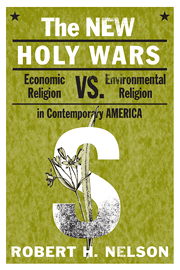The Gulf of Mexico suffered remarkably little damage. Why were so many so willing to believe otherwise?
---------------
The day after the midterm elections in November, panelists at the University of Maryland School of Public Policy discussed the various factors that had contributed to the Democrats’ losses—most surprisingly, the oil spill in the Gulf of Mexico. One speaker with excellent Democratic connections in Washington noted that top White House staff were consumed by the spill and its political fallout for much of the spring of 2010. As staffers now lamented privately, this had diverted attention from other pressing issues—above all, the sputtering economy.
The political fortunes of the Democratic party were not the only collateral damage from the spill. Gulf coast tourism plummeted, even in areas untouched by oil. Seafood restaurants in New York and Chicago proudly advertised that they did not serve Gulf fish. And many oyster beds were devastated when they were flushed with fresh water from the Mississippi River as a “preventive” measure. Most recently, on December 1, Interior Secretary Ken Salazar cancelled previous plans for much expanded offshore oil and gas drilling, killing thousands of jobs and forgoing an opportunity to reduce the nation’s enormous foreign energy bill.
Oddly enough, however, the ecosystem of the Gulf itself turns out to have suffered remarkably little damage from the continuous gushing of oil into the water from April 20 till July 15, when the leaking well was capped. One group of scientists rated the health of the Gulf’s ecology at 71 on a scale of 100 before the spill and 65 in October. By mid-August, the National Oceanic and Atmospheric Administration (NOAA) was having trouble finding spilled oil. This squared with the finding of researchers from the Lawrence Berkeley National Laboratory in California that the half-life of much of the leaking oil was about three days. At that rate, more than 90 percent would have disappeared in 12 days.
NOAA explained one reason for this in a report in August: “It is well known that bacteria that break down the dispersed and weathered surface oil are abundant in the Gulf of Mexico in large part because of the warm water, the favorable nutrient and oxygen levels, and the fact that oil regularly enters the Gulf of Mexico through natural seeps.” In other words, the organisms that normally live off the Gulf’s large natural seepage of oil into the water multiplied extremely rapidly and went on a feeding frenzy. Another 25 percent of the spilled oil—the lightest and most toxic part—simply evaporated at the surface or dissolved quickly.
Damage to wildlife, too, was relatively sparse. As of November 2, the U.S. Fish and Wildlife Service reported that 2,263 oil-soiled bird remains had been collected in the Gulf, far fewer than the 225,000 birds killed by the Exxon Valdez spill in Alaska in 1989. Despite fears for turtles, only 18 dead oil-soiled turtles had been found. No other reptile deaths were recorded. While more than 1,000 sea otters alone had died in the Alaska spill, only 4 oil-soiled mammals (including dolphins) had been found dead in the Gulf region. These are very small numbers relative to the base populations. Similarly, government agencies were unable to find any evidence of dead fish. Fish can simply swim away from trouble. Nor was evidence found of contamination of live fish. In one government test, 2,768 chemical analyses uncovered no signs of contamination.
In the latest irony, marine biologists this fall have actually been seeing surprising increases in some fish populations. It seems that the closure of large areas of the Gulf to fishing amounted to an unplanned experiment in fisheries management. According to Sean Powers, a University of South Alabama marine biologist, “It’s just been amazing how many more sharks we are seeing this year. I didn’t believe it at first.” He attributed the change to the “incredible reduction in fishing pressure,” and added, “What’s interesting to me [is that] we are seeing it across the whole range, from the shrimp and small croaker all the way up to the large sharks.”
Some oil from the spill did reach beaches, and it did so in a seemingly random pattern. The Texas coast was little affected, and as of late July, only 6 of 25 Alabama beaches being monitored had had oil spill-related advisories. Even where oil did reach beaches, human cleanup and natural processes typically removed most of it quickly. By early November, a federal spokesman found a continuing presence of “heavy oil” on 30 miles of the total 580 miles of Gulf beaches where oil had come ashore.
After all the predictions of ecological disaster in the spring, government officials have been searching hard for more evidence of harm. In early November, a Penn State marine biologist announced that he had finally found a “smoking gun”: dead and dying coral reefs in 4,500 feet of water not far from the spill site. Coral in shallower waters and farther from the site was unaffected.
The search for damage to the Gulf, it seems, is a bit like the search for weapons of mass destruction in Iraq. An armada of ships was assembled to respond to the leak caused by an explosion at the Deepwater Horizon well, and a virtual war was declared on it (and on the well’s owner, BP). It is—or should be—embarrassing that the predicted disaster failed to materialize.
In the end, 4.9 million barrels of oil flowed into the Gulf, almost 20 times the Exxon Valdez spill and the largest by far in U.S. history. But there are reasons the ecological consequences were so small in comparison with those of the Exxon Valdez. Start with the fact that the Gulf spill occurred in 5,000 feet of water, while most spills come from tankers at the surface. It took time for the oil to get to the surface, giving the oil-eating “bugs” of the Gulf opportunity to do their work.
A second important factor was that the spill occurred 50 miles from the coast. This left more time for responders to apply chemical dispersants and for wave action and other natural forces to decompose large amounts of oil. What oil did reach the beaches often took the form of tar balls that were less environmentally harmful than actual slicks. Cleanup workers could simply pick them up.
By contrast, the Exxon Valdez spill immediately spread over the surface of the ocean, where many birds and other creatures came into contact with it. Prince William Sound, where the spill began, is an enclosed body of water, and the spilled oil—some of it in the most toxic forms—quickly reached the shore. In addition, the sound has no significant natural oil seepage and so lacks the associated oil-eating organisms. The water is much colder and less conducive to such natural activity. The mammal populations in Prince William Sound and the other affected areas were larger, too.
All of this, to be sure, was well known to students of oil spills. Indeed, the greatest significance of the Gulf spill lies not in its ecological effects, but rather in the outbreak of social hysteria that it occasioned. The episode should be studied as such. As terrorists know all too well, mass hysteria can do more damage than the precipitating event.
Eruptions of social hysteria have occurred throughout history. Among the better known instances are events in Christian Europe associated with fear of the devil. Over several centuries, many thousands of people deemed to be witches were killed. We now have secular equivalents to the devil that evoke their own mass anxieties and destructive overreactions.
In the case of the Gulf spill, the widely distributed pictures of oil gushing into the sea had this effect for many people. Environmentalists are not alone in thinking that human beings may have overstepped our bounds in seeking to transform the natural world for our own selfish purposes. Many fear that we are “playing God” in the world, wantonly destroying plant and animal life, and that God will punish us.
Oil and other fossil sources of energy, moreover, have greatly enhanced humans’ power to transform Creation. It might thus seem appropriate that God’s punishment would take the form of a devastating oil spill. As Ted Turner told CNN in May, the Gulf spill “could be” God’s work. “He’s sending us a message” to curb our destruction of the earth.
Fortunately, episodes of social hysteria eventually run their course, and cooler heads prevail. But a great deal of damage can be done in the meantime. It is important to review why it took so long in the Gulf for reason to prevail.
The largest blame lies with the media. Hysterical overreaction, frankly, sells newspapers and magazines, which is one reason the media have a long history of hyping Communist spying, cancer epidemics, terrorist attacks, and now oil spills. In the case of the Gulf, it was the national media, despite their greater investigative resources, that led the charge. On May 6, using language it employed throughout the spring and early summer, the Washington Post updated its readers on the “catastrophic oil spill unfolding in the Gulf.”
Nine days later the Post reported, “The oil spill in the Gulf of Mexico has not yet caused coastal damage on the scale of the Exxon Valdez disaster. But scientists say it is becoming something different and potentially much more troubling: the first massive U.S. oil spill whose effects so far are largely hidden under water.” The headline “The ‘invisible monster’” evoked a virtual horror movie of terrors lurking in the deep. Throughout the spring and early summer, the Post’s reporters routinely attributed doomsday predictions for the Gulf to unnamed “scientists.” The effect was to suggest that a scientific consensus existed so strong that it was not necessary even to identify any particular scientific authority.
Time magazine on May 17 featured its own cover story on the “catastrophe” in the Gulf. Time offered readers horrifying images of “an uncontrolled gusher with economic, political and social consequences as far as the eye can see. The slick—a morphing mass of at least 2,000 sq. mi. (5,200 sq km) as of May 3, and changing every day,” the story continued, “threatens to kill wildlife and wreck the fishing industry along nearly 1,300 miles (2,100 km) of coastline.” Once again, unnamed “scientists worry that ocean currents could carry the oil around the tip of Florida to the beaches of the East Coast,” potentially devastating the Keys and the Everglades.
The media actually relied less on marine biologists and oil spill experts for their information and more on environmental groups. The Gulf “disaster” offered multiple potential benefits to these groups, including the possibility of desired policy changes. The executive director of the Sierra Club declared, “This will kill any plan to expand offshore drilling for the next decade.” Lisa Margonelli of the New America Foundation saw the spill as a powerful message that “we need to address the underlying issue, and that’s our dependence on oil” and other fossil fuels, with their greenhouse emissions and other environmental harms.
America’s political leadership also contributed to the mass anxiety. President Obama came to office with close personal knowledge of matters such as inner city schools but less of the environment. Ill-served by his advisers, the president on June 15 declared the spill “the worst environmental disaster America has ever faced.” He compared it to “an earthquake or a hurricane” such as San Francisco or Katrina but said it could be even worse because “it’s not a single event that does its damage in a matter of minutes or days. The millions of gallons of oil that have spilled into the Gulf of Mexico are more like an epidemic, one that we will be fighting for months and even years.”
Could the Gulf region simply have been extra-ordinarily lucky? No doubt there was an element of luck. The marine organisms consumed the oil faster than was generally expected. Even so, a scientifically accurate and honest assessment on May 1 would have read something like this:
The oil spill sparked by the explosion at the Deepwater Horizon rig on April 20 is occurring in circumstances never experienced before, particularly the great depth of the water. It is impossible to predict what ecological damage there will be. While unlikely to be catastrophic, the damage could range from significant to minimal. The experience of most oil spills has been that the long-term damage proves less than initially feared. Public impressions to the contrary notwithstanding, oil is a natural substance, including in the ocean, and nature has its ways of dealing with it. The natural conditions in the Gulf of Mexico are considerably more favorable than in Alaska, but even there the effects of the Exxon Valdez spill were rapidly disappearing within five years and today are largely gone.
Instead, America treated the Gulf spill almost as a religious catharsis. The message was that we have sinned against nature, and God is justly punishing us. Whatever the facts, such messages can resonate powerfully. America is unusually religious for a modern nation, and some of its religions, such as environmentalism, are secular. As always, there are many people—the Elmer Gantrys of our time—who are happy to feed the public’s fears.












